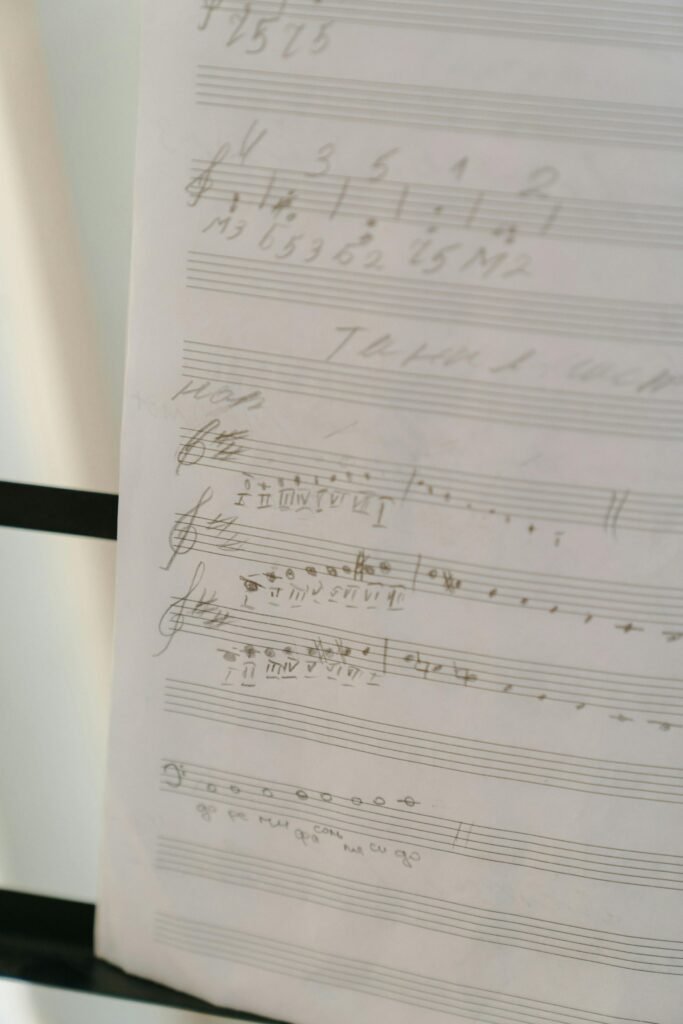As a professional composer, having a solid understanding of music theory is essential for unlocking your creative potential and effectively expressing your musical ideas. Music theory provides composers with a set of fundamental principles and concepts that serve as the building blocks of musical composition. In this comprehensive guide, we’ll delve into the essentials of music theory, exploring key concepts and techniques that every composer should know to enhance their compositional skills and craft compelling musical compositions.

Understanding Musical Elements
1. Pitch and Melody:
Pitch is the perceived frequency of a sound, while melody is a sequence of pitches arranged in a cohesive and expressive manner. Composers use melody to convey emotion, express ideas, and create memorable musical themes. Understanding the principles of melody, such as contour, interval, and phrasing, is essential for crafting engaging and emotive musical lines.
2. Harmony and Chords:
Harmony refers to the simultaneous sounding of multiple pitches, while chords are three or more pitches played together. Harmony provides the harmonic foundation of a composition, supporting and complementing the melody. Composers use chords to create harmonic progressions, establish tonality, and evoke specific moods and emotions in their music.
3. Rhythm and Meter:
Rhythm is the pattern of sounds and silences in music, while meter is the organization of rhythmic patterns into regular beats and measures. Rhythm and meter provide the rhythmic framework of a composition, dictating the pace, groove, and feel of the music. Composers use rhythm and meter to create rhythmic tension and release, syncopation, and rhythmic motifs that drive the momentum of their compositions.
4. Form and Structure:
Form refers to the overall organization and structure of a musical composition, including its sections, themes, and developmental processes. Composers use form to shape the narrative arc of their compositions, guiding listeners through contrasting sections and thematic transformations. Understanding musical forms, such as sonata-allegro, ternary, and rondo forms, allows composers to craft cohesive and coherent musical structures.
Analyzing Musical Works

1. Score Analysis:
Score analysis involves studying the musical notation of a composition to understand its compositional techniques and structural elements. Composers analyze scores to identify thematic material, harmonic progressions, rhythmic patterns, and formal structures employed by other composers. By studying scores from different musical genres and periods, composers gain insights into diverse compositional approaches and expand their creative vocabulary.
2. Listening Skills:
Developing active listening skills is essential for composers to analyze and appreciate musical works across various styles and genres. Composers listen attentively to recordings and live performances, focusing on elements such as melody, harmony, rhythm, texture, and orchestration. By actively listening to music, composers deepen their understanding of musical concepts and gain inspiration for their own compositions.
Applying Music Theory in Composition
1. Melodic Development:
Composers use melodic development techniques, such as sequence, variation, and fragmentation, to transform and develop melodic ideas throughout a composition. By applying melodic development techniques, composers create cohesive and dynamic musical narratives that engage listeners and evoke emotional responses.
2. Harmonic Progression:
Harmonic progression involves the movement of chords and tonal centers within a composition. Composers use harmonic progressions to create tension, resolution, and harmonic interest in their music. By exploring different chord progressions and harmonic sequences, composers craft harmonic landscapes that enhance the expressiveness and depth of their compositions.
3. Rhythmic Innovation:
Rhythmic innovation involves experimenting with rhythmic patterns, meters, and subdivisions to create rhythmic interest and complexity in music. Composers use rhythmic innovation to drive the energy and momentum of their compositions, incorporating syncopation, polyrhythms, and metric modulation to add rhythmic tension and excitement.
4. Structural Integrity:
Structural integrity refers to the coherence and unity of a musical composition, achieved through careful organization of its thematic material, harmonic progressions, and formal design. Composers strive to maintain structural integrity in their compositions by balancing repetition and variation, establishing thematic connections, and creating clear formal outlines that guide listeners through the musical journey.
Conclusion
Mastering the essentials of music theory is a cornerstone of compositional proficiency, empowering composers to craft expressive, coherent, and compelling musical compositions. By understanding the fundamental elements of music, analyzing exemplary works, and applying theory-driven techniques in composition, composers can elevate their creative output and connect with audiences on a profound emotional level. So, embrace the principles of music theory, explore its infinite possibilities, and unleash your creativity to compose music that resonates with depth, beauty, and meaning.